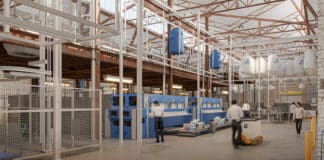 Preventive maintenance, analytics, and a proactive infrastructure
are key to an effective facilities management approach. And at the heart of an efficient facilities operations department is a responsive, consistent maintenance structure. So write the guest contributors in the article below on three broad best practices for facility management departments.
Preventive maintenance, analytics, and a proactive infrastructure
are key to an effective facilities management approach. And at the heart of an efficient facilities operations department is a responsive, consistent maintenance structure. So write the guest contributors in the article below on three broad best practices for facility management departments.
Whether broad or specific, what is a best practice you have positioned front and center for your department?
This article contributed by Sharon Prezzy, deputy PMO lead at Springfield, VA-based Strategy and Management Services, Inc. (SAMS), and co-authored by Reginal McCotter, chief engineer/project manager with SAMS, hits on several key points.
At the heart of an efficient facilities operations department is a responsive, consistent maintenance structure to ensure all systems are running to their peak potential, bringing about top organizational performance and economy.
Sounds simple enough, right? Perhaps, but you can streamline your organization’s process and begin realizing the significant benefits of effective facilities management by taking note of the following three key “Best Practices” we’ve amassed over many years in the field.
1. Simple Steps Make a Big Impact
FACT: Small modifications to your daily routine make a big difference to your bottom line!
Minor changes, such as turning off lights even 15 minutes earlier each evening, outfitting toilets with flex valves for less water use per flush, and “energy curtailment” efforts, such as using LED bulbs, can amount to up to 40% savings in your company’s monthly energy bills.
2. ‘If it Ain’t Broke, DO Fix It’—Preventative Approaches Bring Big Savings
FACT: Delaying small but necessary repairs only leads to bigger costs later on.
For example, what may begin as a simple fix to toilet valves can quickly become hundreds of thousands of dollars in the form of emergency plumbing fees, water damage repair, etc., if problems are allowed to fester too long.
Instead, practice proactive, preventative maintenance to protect your investment and reduce costs. You will also receive the added benefits of increased employee productivity and morale that stem from a well-managed, comfortable working environment. It is critical to be proactive, not reactive when it comes to your facilities operations and maintenance.
3. The Analytics Factor—Greater Intelligence that Boosts ROI
FACT: Often touted as the “future of facilities,” analytics are at the core of any efficient facilities management program.
The right analytic software, which integrates with the building automation system, or BAS, is an effective vehicle to centralize your facilities repair and inspections schedules, as well as create customized checklists for your maintenance teams to manage facilities workflow, track logs, and ensure all systems are operating at top levels of performance.
Within your analytic software, there is typically an option to track activity by either a Comprehensive or Performance approach, allowing you to focus your monitoring efforts that align most closely with your organization’s larger goals.
Comprehensive Approach: provides an overall organizational strategy approach to facilities and operations management. It also provides top-level analytics and suggestions for continued implementation of new initiatives to maximize return.
Performance Approach: tracks more detailed elements of the larger facilities management process such as costs, quality control, and risk management.
Your analytic tool is a value-add for your clients, through the reports it is able to generate noting current status, future scheduled maintenance repairs, and additional suggestions to maximize efficiency across their facilities systems and make them more “green.” As facilities operations efforts are a group effort, collaboration across teams is an essential ingredient to long-lasting success.
While facilities may seem like a straightforward operational necessity, effective management can spell the distinct difference between an organization’s large-scale success and failure. Remember these top tips to maximize your efficiency, potential, and return from your company’s facility systems, and pave the way to proactive management and top impacts across the board.
The authors’ firm, SAMS, is a SBA 8(a) program participant, verified SDVOSB, EDWOSB, SBA-certified SDB small business, WBE certified, and Commonwealth of Virginia SWaM certified company that provides operations support, information technology services, facilities management functions and a range of enterprise-wide, complex services and solutions for federal agencies, state and local governments and commercial buyers.




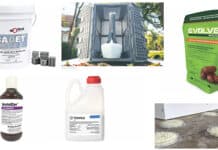
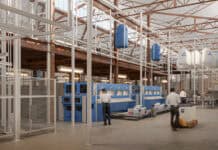

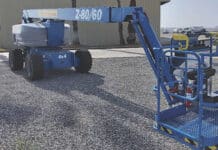
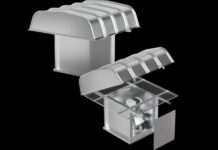


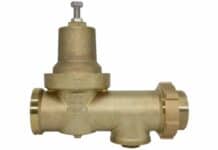


 Preventive maintenance, analytics, and a proactive infrastructure
are key to an effective facilities management approach. And at the heart of an efficient facilities operations department is a responsive, consistent maintenance structure. So write the guest contributors in the article below on three broad best practices for facility management departments.
Preventive maintenance, analytics, and a proactive infrastructure
are key to an effective facilities management approach. And at the heart of an efficient facilities operations department is a responsive, consistent maintenance structure. So write the guest contributors in the article below on three broad best practices for facility management departments.

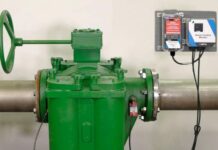

![[VIDEO] Job Order Contracting: Accelerating the Projects that Matter](https://facilityexecutivemagazine.kinsta.cloud/wp-content/uploads/2024/05/maxresdefault-324x160.jpg)
